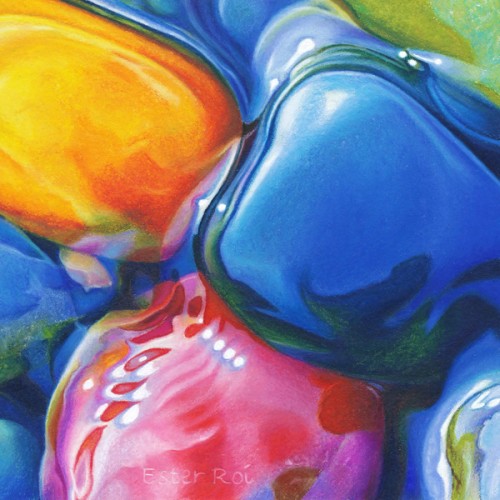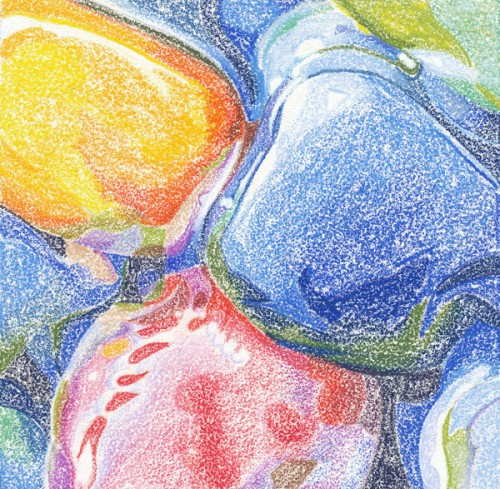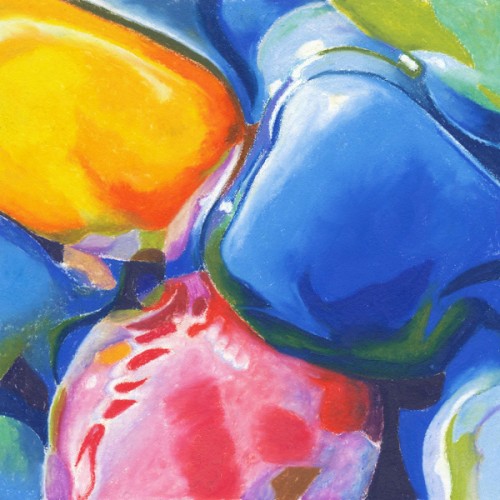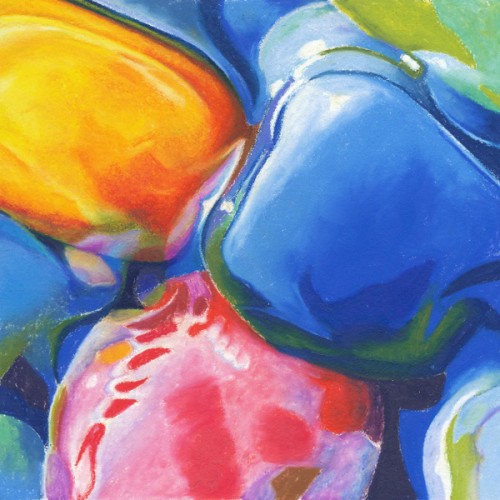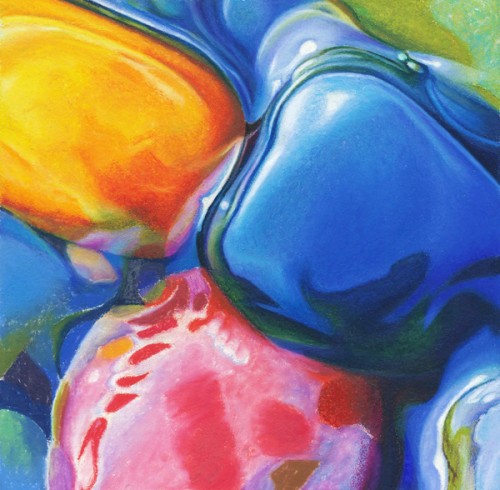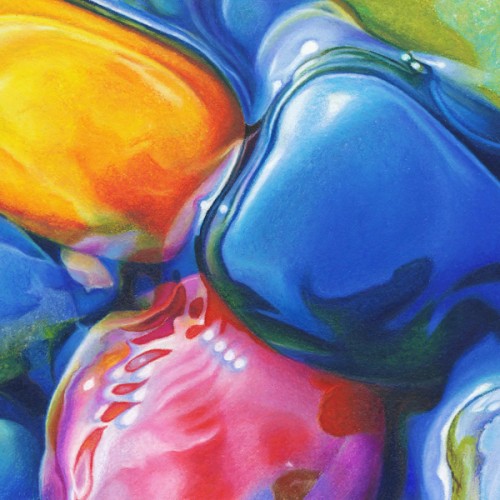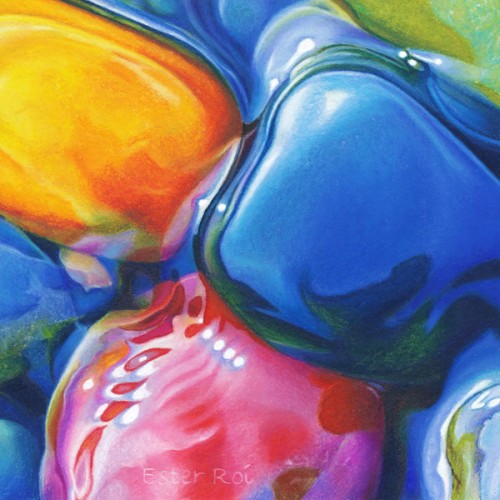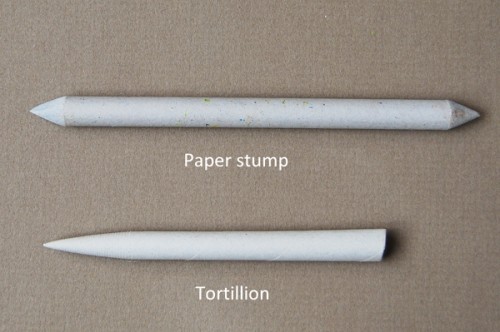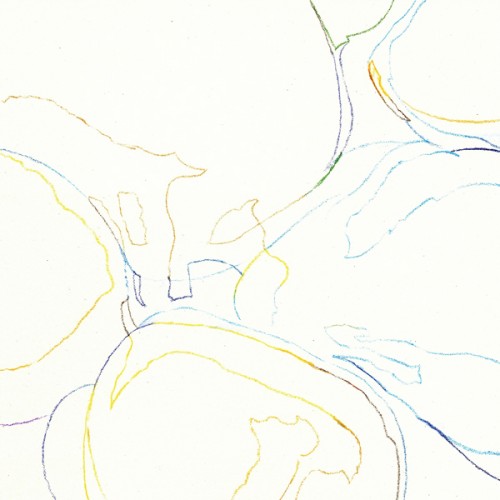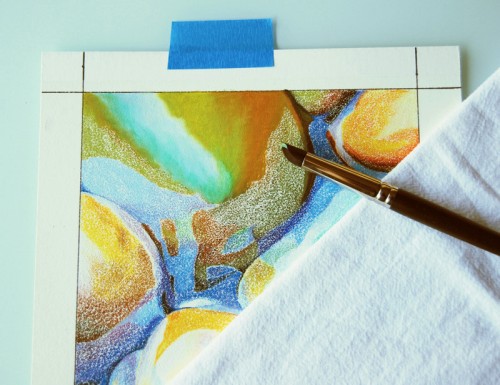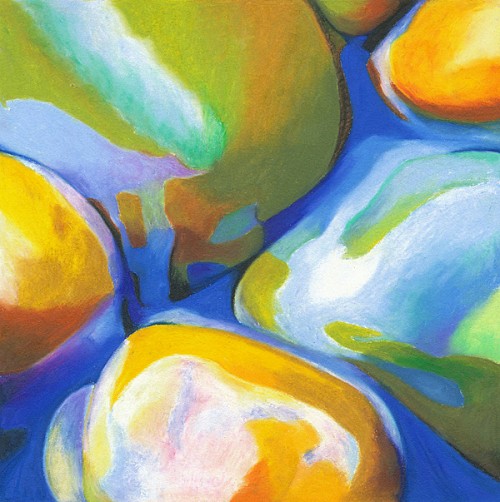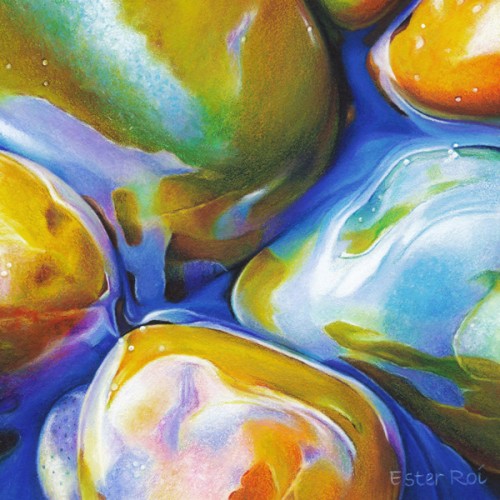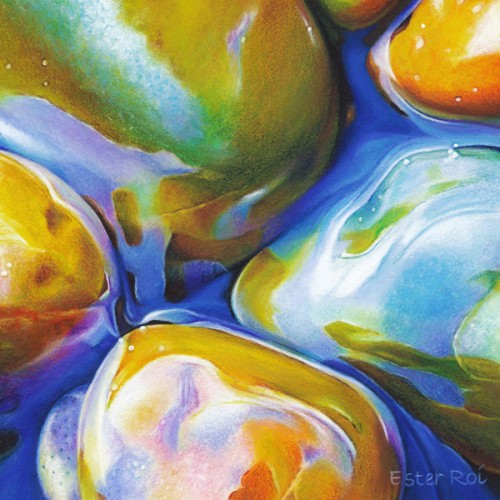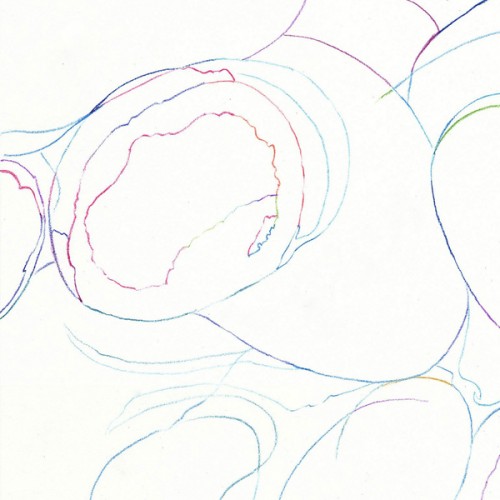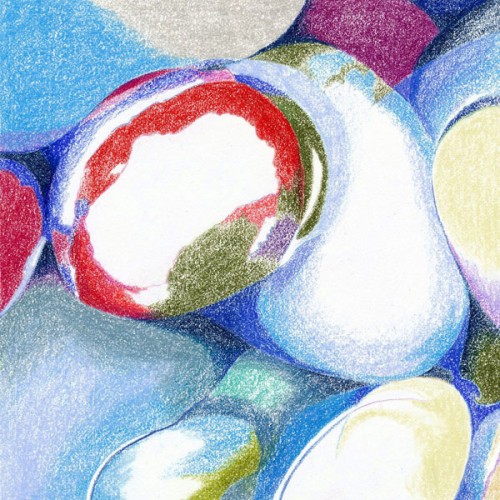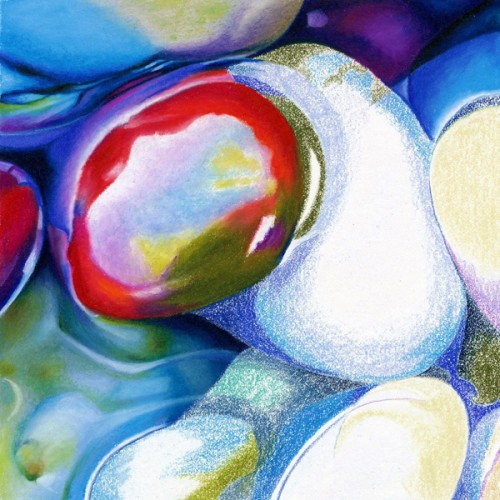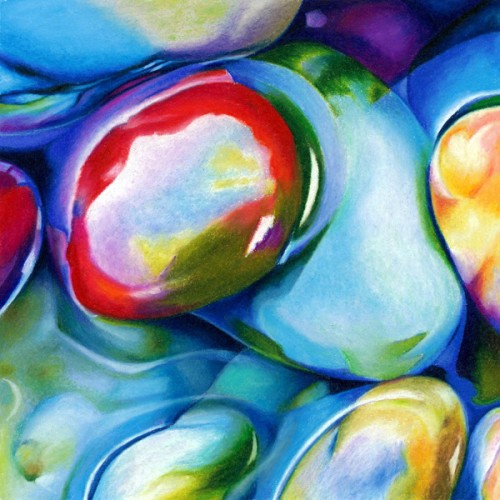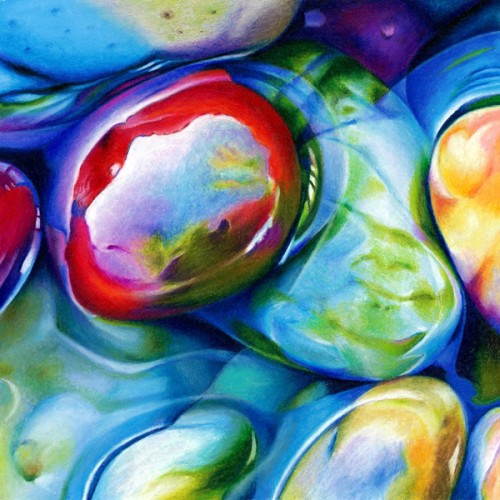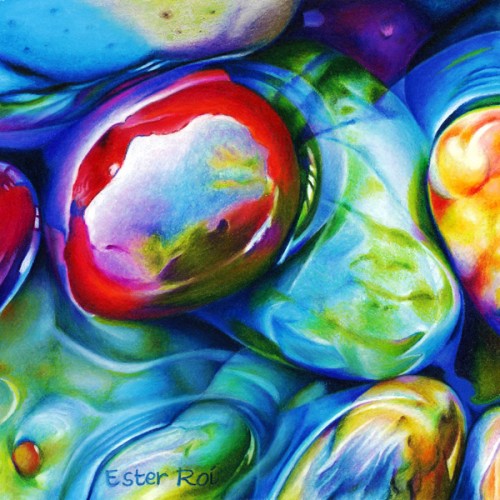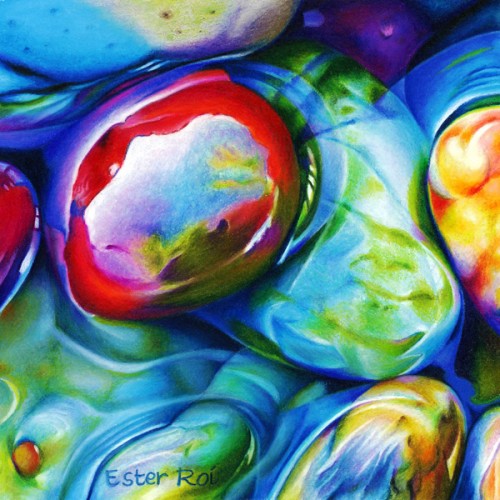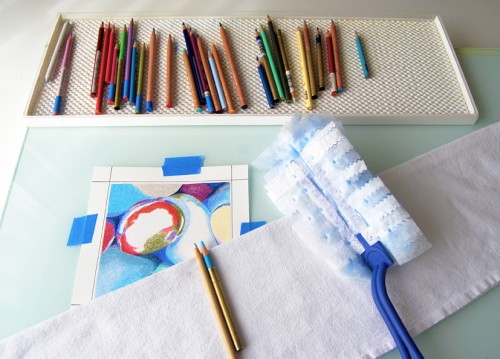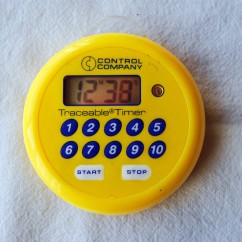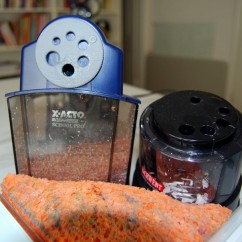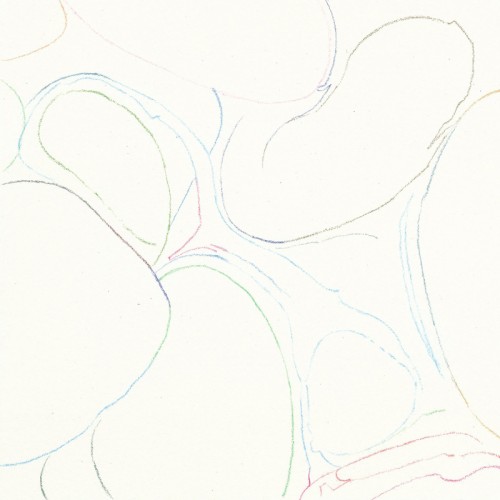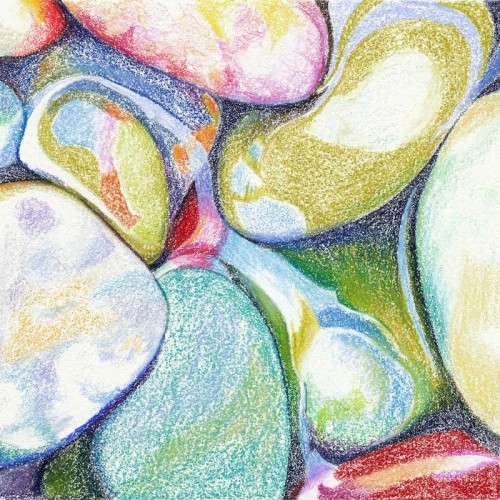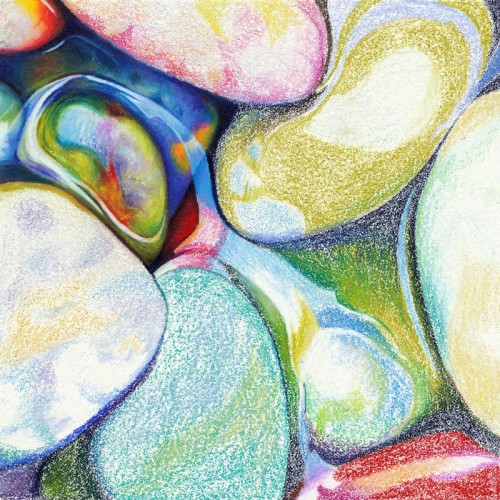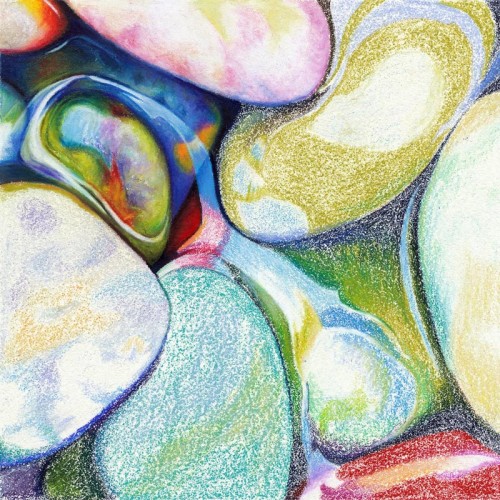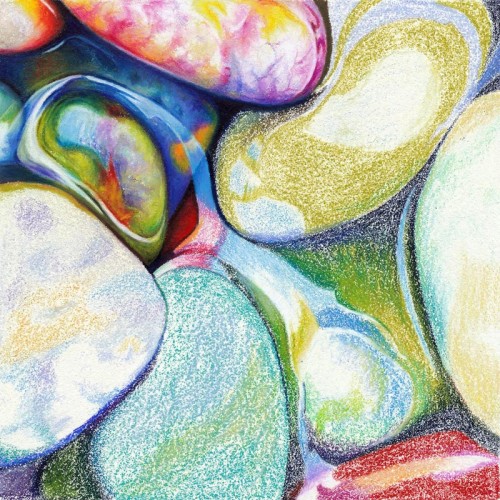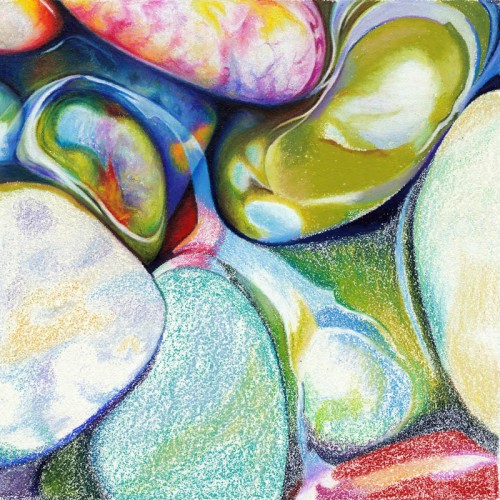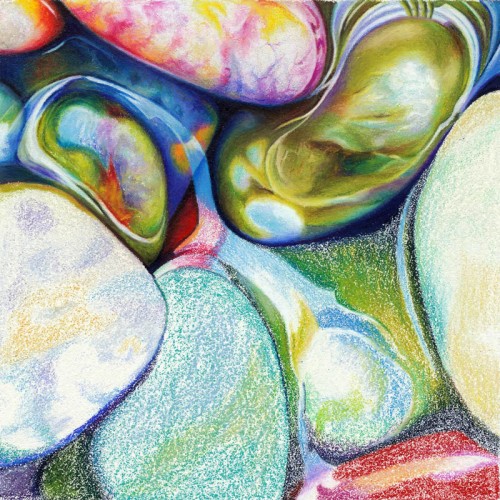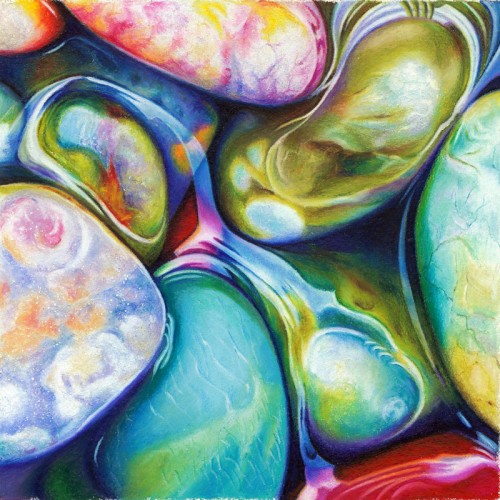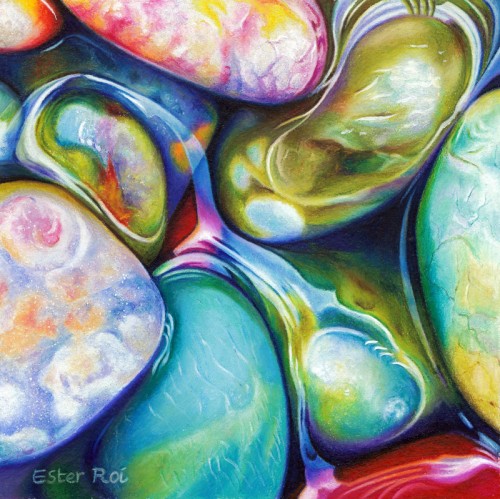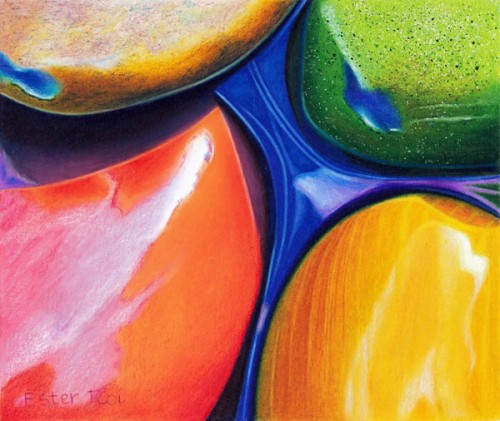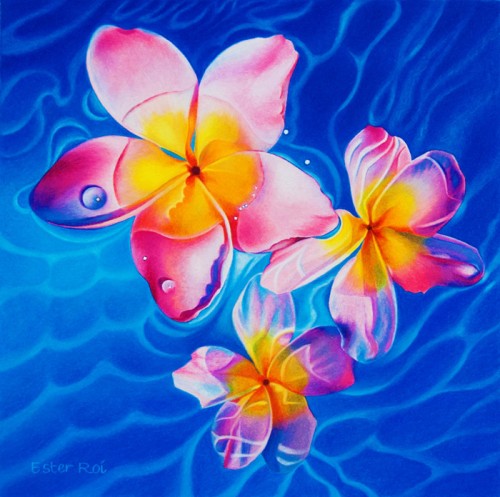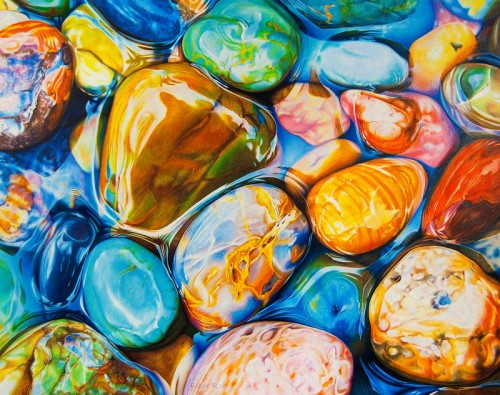Title: River Pebbles, No. 4
- Size: 5" x 5"
- Medium: Caran d'Ache Neocolor I and II, Prismacolor Premier Colored Pencil, Caran d'Ache Luminance Colored Pencil
- Miscellaneous: Tortillions
- Surface: Art Spectrum Colourfix Supertooth Board
- Technique: Icarus Drawing Board
- Mounted on a 5" x 5" Ampersand Claybord with 2" cradle (if you are interested in learning how I mount and varnish my artwork, you can read my post on Glassless Framing)
After drawing the outline with Verithin colored pencils on the cool zone of the Icarus Drawing Board, I proceeded to map the main colors of the project with Neocolor artist crayons on the cool zone.
For more on color mapping with artist crayons you can view the following videos:
- Exercises on Colourfix Paper - Layering Artist Crayons on Colourfix Paper
- Mussel Shell - Blocking in Colors with Artist Crayons
With temperature setting at maximum, I melted the artist crayons using a clay shaper (color shaper).
For more on melting artist crayons you can view the following videos:
- Exercise on Colourfix Paper - Melting Artist Crayon on Colourfix Paper
- Mussel Shell - Melting Artist Crayons
With the temperature set at medium I developed the colors, values and details of the orange pebble by layering colored pencils and blending them with a tortillion.
The blue pebbles were accomplished in the same manner as the orange pebble.
I finished the drawing by completing the red pebble in the same manner as the other pebbles.
Finally I cleaned up the drawing and emphasized the highlights with a white artist crayon. I like my signature to blend in and I can achieve that by using a sharp, white Verithin on the warm zone. It lightens the colors underneath just enough to make the letters visible without detracting from the art.
When I first started experimenting with heat I was always on the lookout for different tools that would work with my technique. I remember trying tortillions and disliking them. I found that I couldn't really use them by the long side of the point because they would leave indentations/ridges on the waxy pigments.
The paper stumps that I normally use for large artwork were too thick and soft for this small project. At the same time I was getting very frustrated with how inconsistent the various colorless blenders have been lately. Finally I decided to give the tortillion another try and, guess what? It works great! The point is very thin and sturdy, not as soft as the paper stump's, perfect for blending colored pencils. It's easy to clean with sandpaper and very inexpensive. If you're using it already, you're way ahead of me. If you're not, try one and you'll be pleased!

